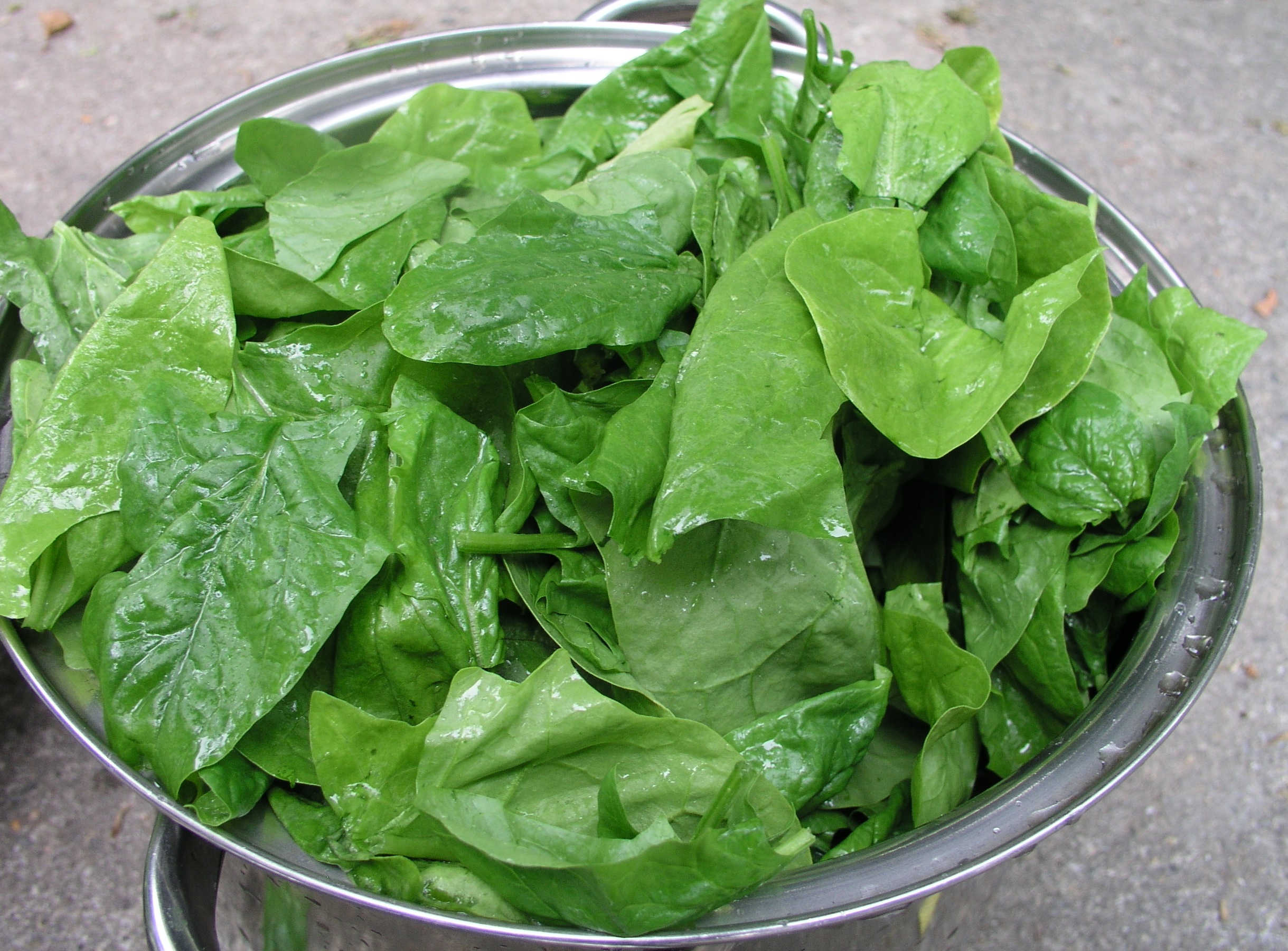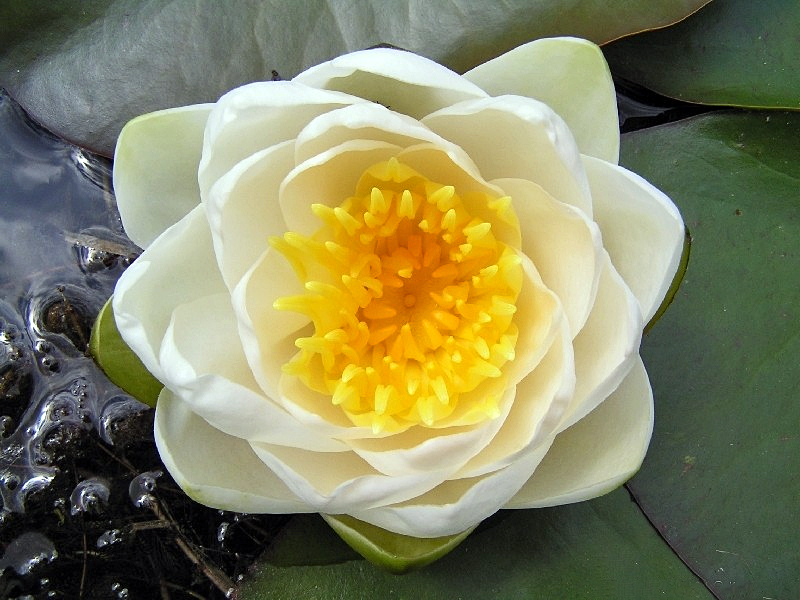|
Watercress
Watercress or yellowcress (''Nasturtium officinale'') is a species of aquatic flowering plant in the cabbage family, Brassicaceae. Watercress is a rapidly growing perennial plant native to Eurasia. It is one of the oldest known leaf vegetables consumed by humans. Watercress and many of its relatives, such as garden cress, mustard, radish, and wasabi, are noteworthy for their piquant flavors. Description Watercress can grow up to in length. The stems are hollow and float in water. The leaf structure is pinnately compound. Small, white, and green inflorescences are produced in clusters and are frequently visited by insects, especially hoverflies, such as '' Eristalis'' flies. Taxonomy Watercress is listed in some sources as belonging to the genus ''Rorippa'', although molecular evidence shows those aquatic species with hollow stems are more closely related to ''Cardamine'' than ''Rorippa''. Despite the Latin name, watercress is not particularly closely related to the fl ... [...More Info...] [...Related Items...] OR: [Wikipedia] [Google] [Baidu] |
Tropaeolum
''Tropaeolum'' , commonly known as nasturtium (; literally "nose-twister" or "nose-tweaker"), is a genus of roughly 80 species of annual and perennial herbaceous flowering plants. It was named by Carl Linnaeus in his book ''Species Plantarum'', and is the only genus in the family Tropaeolaceae. The nasturtiums received their common name because they produce an oil similar to that of watercress (''Nasturtium officinale''). The genus ''Tropaeolum'', native to South and Central America, includes several very popular garden plants, the most common being '' T. majus'', '' T. peregrinum'' and '' T. speciosum''. One of the hardiest species is '' T. polyphyllum'' from Chile, the perennial roots of which can survive the winter underground at elevations of . Plants in this genus have showy, often intensely bright flowers and rounded, peltate (shield-shaped) leaves with the petiole in the centre. The flowers are bisexual and zygomorphic, with five petals, a superior three-carpelled ovar ... [...More Info...] [...Related Items...] OR: [Wikipedia] [Google] [Baidu] |
Chalk Streams
Chalk streams are rivers that rise from springs in landscapes with chalk bedrock. Since chalk is permeable, water easily percolates through the ground to the water table and chalk streams therefore receive little surface runoff. As a result, the water in the streams contains little organic matter and sediment and is generally very clear. The beds of the rivers are generally composed of clean, compacted gravel and flints, which provide good spawning grounds for Salmonidae fish species. Since they are primarily fed by aquifers, the flow rate, mineral content and temperature range of chalk streams shows less seasonal variation than other rivers. They are mildly alkaline and contain high levels of nitrate, phosphate, potassium and silicate. In addition to algae and diatoms, the streams provide a suitable habitat for macrophytes (including water crowfoot) and oxygen levels are generally supportive of coarse fish populations. Of the 210 rivers classified as chalk streams glo ... [...More Info...] [...Related Items...] OR: [Wikipedia] [Google] [Baidu] |
Tropaeolum Majus
''Tropaeolum majus'', the garden nasturtium, nasturtium, Indian cress or monk's cress, is a species of flowering plant in the family Tropaeolaceae, originating in the Andes from Bolivia north to Colombia. An easily-grown annual or short-lived perennial with disc-shaped leaves and brilliant yellow, orange or red flowers, it is of cultivated, probably hybrid origin.Huxley, A., ed. (1992). ''New RHS Dictionary of Gardening''. Macmillan . It is not closely related to the genus '' Nasturtium'' (which includes watercress). Description It is a fast-growing plant, with trailing stems growing to . The leaves are large, nearly circular, in diameter, green to glaucous green above, paler below; they are peltate, with the 5–30-cm-long petiole near the middle of the leaf, with several veins radiating to the smoothly rounded or slightly lobed margin. The flowers are 2.5–6 cm in diameter, mildly scented, with five petals, eight stamens, and a 2.5–3 cm long nectar spur at the ... [...More Info...] [...Related Items...] OR: [Wikipedia] [Google] [Baidu] |
Rorippa
''Rorippa'' is a globally distributed genus in the family Brassicaceae, with species occurring on all continents except for Antarctica. ''Rorippa'' species are natively distributed in the Northern Hemisphere through Eurasia and North America, and dispersed into the Southern Hemisphere through long-distance dispersal. ''Rorippa'' species are annual to perennial herbs, usually with yellow flowers and a peppery flavour. They are known commonly as yellowcresses. Description As a close relative of ''Arabidopsis'', ''Rorippa'' has emerged as a group of valuable model organisms for investigating various biological processes. Researchers have utilized ''Rorippa'' to study developmental phenomena such as heterophylly, weediness, and vegetative regeneration. For example, heterophylly is the ability of plants to produce different leaf forms in response to contrasting environments, such as aerial or submerged conditions. This may incur anatomical or physiological changes and facilitate ada ... [...More Info...] [...Related Items...] OR: [Wikipedia] [Google] [Baidu] |
Cardamine
''Cardamine'' is a large genus of flowering plants in the mustard family, Brassicaceae, known as bittercresses and toothworts. It contains more than 200 species of annuals and perennials. Species in this genus can be found in diverse habitats worldwide, except the Antarctic. The name ''Cardamine'' is derived from the Greek ''kardaminē'', water cress, from ''kardamon'', pepper grass. Description The leaves can have different forms, from minute to medium in size. They can be simple, pinnate or bipinnate. They are basal and cauline (growing on the upper part of the stem), with narrow tips. They are rosulate (forming a rosette). The blade margins can be entire, serrate or dentate. The stem internodes lack firmness. The radially symmetrical flowers grow in a racemose many-flowered inflorescence or in corymbs. The white, pink or purple flowers are minute to medium-sized. The petals are longer than the sepals. The fertile flowers are hermaphroditic. Taxonomy The genus ''Cardami ... [...More Info...] [...Related Items...] OR: [Wikipedia] [Google] [Baidu] |
Garden Cress
Cress (''Lepidium sativum''), sometimes referred to as garden cress (or curly cress) to distinguish it from similar plants also referred to as cress (from Old English ''cresse''), is a rather fast-growing, edible herb. Garden cress is genetically related to watercress and mustard, sharing their peppery, tangy flavour and aroma. In some regions, garden cress is known as mustard and cress, garden pepper cress, pepperwort, pepper grass, or poor man's pepper.Staub, Jack E, Buchert, Ellen75 Exceptional Herbs for Your GardenPublished by Gibbs Smith, 2008. , 9781423602514 This annual plant can reach a height of , with many branches on the upper part. The white to pinkish flowers are only across, clustered in small branched racemes. When consumed raw, cress is a high-nutrient food containing substantial content of vitamins A, C and K and several dietary minerals. In agriculture Cultivation of cress is practical both on mass scales and on the individual scale. Garden cress is s ... [...More Info...] [...Related Items...] OR: [Wikipedia] [Google] [Baidu] |
Leaf Vegetable
Leaf vegetables, also called leafy greens, vegetable greens, or simply greens, are plant leaves eaten as a vegetable, sometimes accompanied by their petioles and shoots, if tender. Leaf vegetables eaten raw in a salad can be called salad greens, whereas leaf vegetables eaten cooked can be called pot herbs. Nearly one thousand species of plants with edible leaves are known. Leaf vegetables most often come from short-lived herbaceous plants, such as lettuce and spinach. Woody plants of various species also provide edible leaves. The leaves of many fodder crops are also edible for humans, but are usually only eaten under famine conditions. Examples include alfalfa, clover, and most grasses, including wheat and barley. Food processing, such as drying and grinding into powder or pulping and pressing for juice, may involve these crop leaves in a diet. Leaf vegetables contain many typical plant nutrients, but their vitamin K levels are particularly notable since they are photos ... [...More Info...] [...Related Items...] OR: [Wikipedia] [Google] [Baidu] |
Brassicaceae
Brassicaceae () or (the older but equally valid) Cruciferae () is a medium-sized and economically important Family (biology), family of flowering plants commonly known as the mustards, the crucifers, or the cabbage family. Most are herbaceous plants, while some are shrubs. The leaves are simple (although are sometimes deeply incised), lack stipules, and appear alternately on stems or in Rosette (botany), rosettes. The inflorescences are terminal and lack bracts. The flowers have four free sepals, four free alternating petals, two shorter free stamens and four longer free stamens. The fruit has seeds in rows, divided by a thin wall (or septum). The family contains 372 genera and 4,060 accepted species. The largest genera are ''Draba'' (440 species), ''Erysimum'' (261 species), ''Lepidium'' (234 species), ''Cardamine'' (233 species), and ''Alyssum'' (207 species). , it was divided into two subfamilies, Brassicoideae and Aethionemoideae. The family contains the cruciferous vegetable ... [...More Info...] [...Related Items...] OR: [Wikipedia] [Google] [Baidu] |
Aquatic Plant
Aquatic plants, also referred to as hydrophytes, are vascular plants and Non-vascular plant, non-vascular plants that have adapted to live in aquatic ecosystem, aquatic environments (marine ecosystem, saltwater or freshwater ecosystem, freshwater). In lakes, rivers and wetlands, aquatic vegetations provide cover for aquatic animals such as fish, amphibians and aquatic insects, create substrate (marine biology), substrate for benthic invertebrates, produce oxygen via photosynthesis, and serve as food for some herbivorous wildlife. Familiar examples of aquatic plants include Nymphaeaceae, waterlily, Nelumbo, lotus, duckweeds, mosquito fern, floating heart, water milfoils, Hippuris, mare's tail, water lettuce, water hyacinth, and algae. Aquatic plants require special adaptation (biology), adaptations for prolonged inundation in water, and for buoyancy, floating at the water surface. The most common adaptation is the presence of lightweight internal packing cells, aerenchyma, but floa ... [...More Info...] [...Related Items...] OR: [Wikipedia] [Google] [Baidu] |
Macao
Macau or Macao is a special administrative region of the People's Republic of China (PRC). With a population of about people and a land area of , it is the most densely populated region in the world. Formerly a Portuguese colony, the territory of Portuguese Macau was first leased to Portugal Portugal, officially the Portuguese Republic, is a country on the Iberian Peninsula in Southwestern Europe. Featuring Cabo da Roca, the westernmost point in continental Europe, Portugal borders Spain to its north and east, with which it share ... by the Ming dynasty as a trading post in 1557. Portugal paid an annual rent and administered the territory under Chinese sovereignty until 1887, when Portugal gained perpetual colonial rights with the signing of the Sino-Portuguese Treaty of Peking. The colony remained under Portuguese rule until the 1999 handover to China. Macau is a Special administrative regions of China, special administrative region of China, which maintains separ ... [...More Info...] [...Related Items...] OR: [Wikipedia] [Google] [Baidu] |
Hong Kong
Hong Kong)., Legally Hong Kong, China in international treaties and organizations. is a special administrative region of China. With 7.5 million residents in a territory, Hong Kong is the fourth most densely populated region in the world. Hong Kong was established as a colony of the British Empire after the Qing dynasty ceded Hong Kong Island in 1841–1842 as a consequence of losing the First Opium War. The colony expanded to the Kowloon Peninsula in 1860 and was further extended when the United Kingdom obtained a 99-year lease of the New Territories in 1898. Hong Kong was occupied by Japan from 1941 to 1945 during World War II. The territory was handed over from the United Kingdom to China in 1997. Hong Kong maintains separate governing and economic systems from that of mainland China under the principle of one country, two systems. Originally a sparsely populated area of farming and fishing villages,. the territory is now one of the world's most signific ... [...More Info...] [...Related Items...] OR: [Wikipedia] [Google] [Baidu] |







